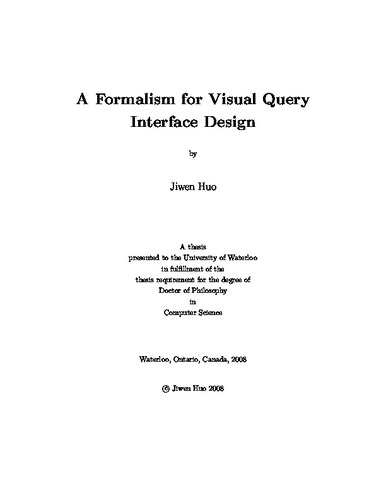| dc.description.abstract | The massive volumes and the huge variety of large knowledge bases make information
exploration and analysis difficult. An important activity is data filtering and
selection, in which both querying and visualization play important roles. Interfaces for data exploration environments normally include both, integrating them as tightly as possible.
But many features of information exploration environments, such as visual representation
of queries, visualization of query results, interactive data selection from visualizations, have only been studied separately. The intrinsic connections between
them have not been described formally. The lack of formal descriptions inhibits the
development of techniques that produce new representations for queries, and natural
integration of visual query specification with query result visualization.
This thesis describes a formalism that describes the basic components of information
exploration and and their relationships in information exploration environments. The key aspect of the formalism is that it unifies querying and visualization within a single framework, which provides a foundation for designing and analysing visual query
interfaces.
Various innovative designs of visual query representations can be derived from the
formalism. Simply comparing them with existing ones is not enough, it is more important to discover why one visual representation is better or worse than another. To do this it is necessary to understand users’ cognitive activities, and to know how these cognitive activities are enhanced or inhibited by different presentations of a query so that novel interfaces can be created and improved based on user testing.
This thesis presents a new experimental methodology for evaluating query representations, which uses stimulus onset asynchrony to separate different aspects of query comprehension. This methodology was used to evaluate a new visual query representation based on Karnaugh maps, and showing that there are two qualitatively different approaches to comprehension: deductive and inductive. The Karnaugh map representation scales extremely well with query complexity, and the experiment shows that its good scaling properties occur because it strongly facilitates inductive comprehension. | en |

